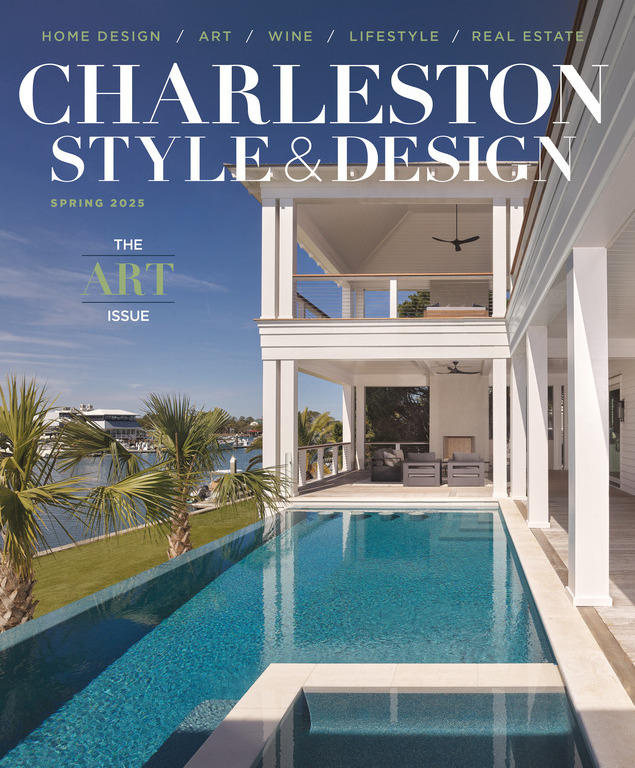
As a child, Maryann Palmgren recognized art as a door beckoning her to pass through, opening to a universe of color and possibility.
An accomplished expressionist painter, Palmgren says that while she felt she was born to create art, finding time and solitude to develop her creative impulse was thwarted until recently. Until three years ago, her life included a career in teaching, commercial real estate and schooling her three children at home from first through 12th grade.
“To be really creative, to develop the creative bent, you need time and solitude” she says. “My children are grown, I retired from teaching three years ago, so now I feel the freedom to paint whenever the urge strikes. Lately, I’m finding that to be a daily occurrence.”
Her children—Holland, 34, Graham, 32, and Corban, 29—are on their own now. Palmgren’s husband, Roy, supports her in her artistic endeavor, handling the details of everything involved in the regional art shows in which she exhibits. “He is my Theo,” she says, referring to Van Gogh’s brother, who supported and encouraged the artist throughout his career. “Without Roy, it’s possible that I wouldn’t be pursuing this.”
Born in Gastonia, North Carolina, just up the road from Charlotte, Palmgren grew up in Myrtle Beach, and considers herself to be a South Carolinian. She earned a bachelor’s in art education at Coastal Carolina College (now University) and discovered early on that she was a natural teacher. She enjoyed working as an art educator in Myrtle Beach public schools for several years. At age 30, she moved to Charleston and shifted focus to her new career and family yet continued teaching art privately over the next 20 years.

Today, this effervescent and well-spoken personality gives painting her undivided attention. The hues of the sea compose her dominant color palette. “You won’t see many oranges or reds in my paintings because these colors seem to never satisfy,” she says. “It sometimes feels like a ‘clown’ painting when I use them, even when toned down. But the blues and greens are calming and invigorating at the same time! Each of my paintings follows the principles of design with a focal point for the eye to rest, while rhythm and repetition moves the eye to explore every other aspect of the design.”
Palmgren disavows the label “abstract painter,” saying expressionism has been her focus and sustaining impulse. While she does not choose a particular subject matter and abstract it, neither does she just “fling colors” at a canvas to see what happens.
“More than anything, I was drawn to expressionism by the movement or rhythm of the work and the texture,” she says. “Nonobjective expressionism done well is extremely challenging, but I’m pretty stubborn. I won’t quit until every element and principle has been satisfied.”
Van Gogh was Palmgren’s first great love and a lasting influence. Somewhat later, she also embraced the examples of Matisse, Rousseau and O’Keefe.
Palmgren says the act of painting “delights, confuses and surprises” her, referring to the confusion she sometimes experiences when the right color does not emerge or when she doesn’t feel a painting is going anywhere. “The surprise comes when I introduce one color into another and the hue I am looking for surfaces,” she explains. “The delight is when it all comes together.”
Echoing the sentiments of Rodin, Palmgren says that art “finds” her during the painting process. “It’s more of a surfacing or revealing of what a painting’s potential is, what it can be. I always hope for beauty to find me in this process,” she says. “It’s layer upon layer. I apply thick acrylic paint with a palette knife and limit my palette to four or five colors. I don’t use brushes at all and don’t always mix colors before putting them on canvas. I never use black. Just deep blues and greens for my darker color values.”

For 25 years, Palmgren’s art greatly influenced her teaching, though more recently it has reinforced the gratitude she felt for being able to do it. “To have the time and place to apply paint to a canvas is a great gift,” she says. “It takes time and perseverance to find your voice, and if you don’t have your own voice as an artist, what’s the point? There is a definite distinction between a voice and just noise. When my paintings are just noise, I have failed.”
Like many independent-minded artists, Palmgren has chosen not to exhibit in a gallery. Her reasons are straightforward. “I’m not currently pursuing that opportunity,” she explains. “Presently, I enjoy exhibiting in regional art shows, spending time with patrons face-to-face. A common request from these patrons is for a customized work of art based on one of my originals but adjusted in size to suit their individual space. I always enjoy creating these custom pieces for new collectors. My husband and I currently travel to the D.C. and Chicago areas. This year marked my first showing at the Piccolo Spoleto Outdoor Art Exhibition.”
For her the most rewarding aspect of a life in art is witnessing the dawn of understanding in an observer’s eyes. “It means so much when someone really ‘gets’ it,” she says. “When people fall in love with my work and understand what it is, that means everything. With my original works, I tell people, ‘Please do not buy this unless you really love it.’”
Bill Thompson covers the arts, books and design.

